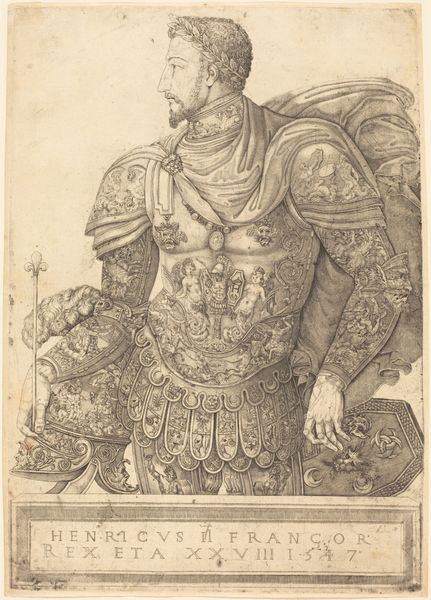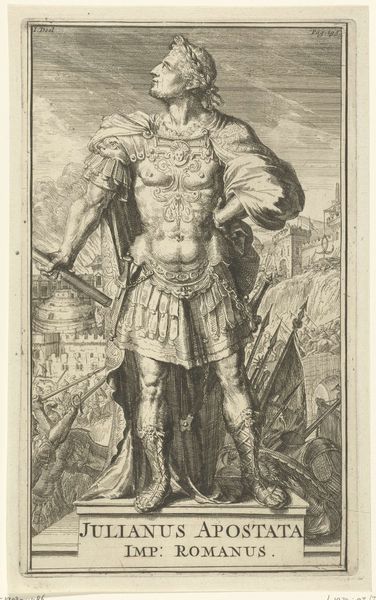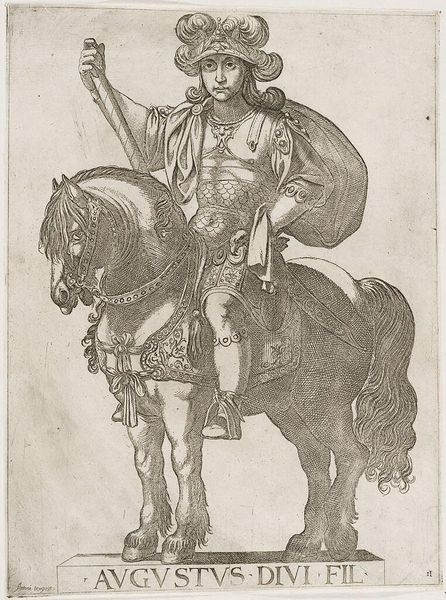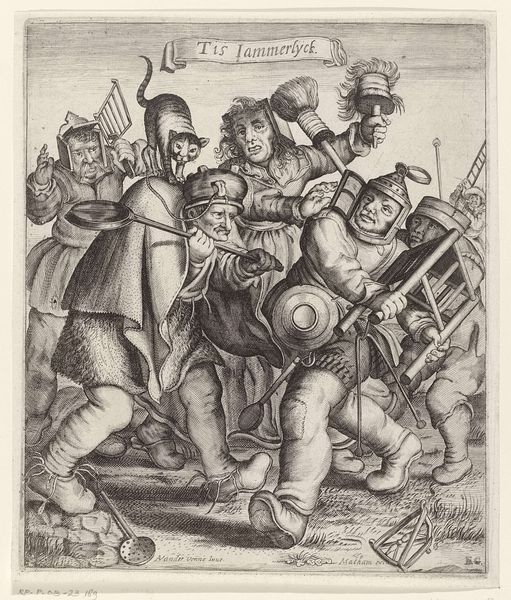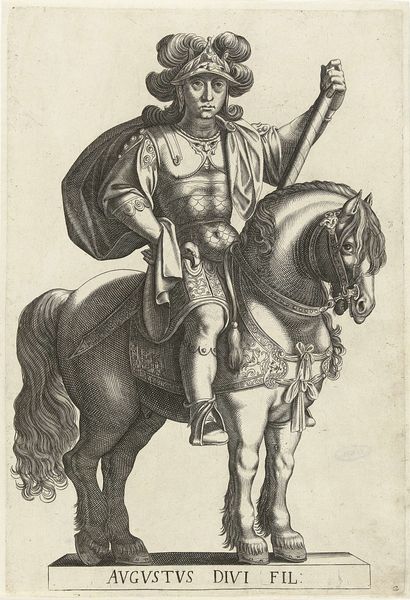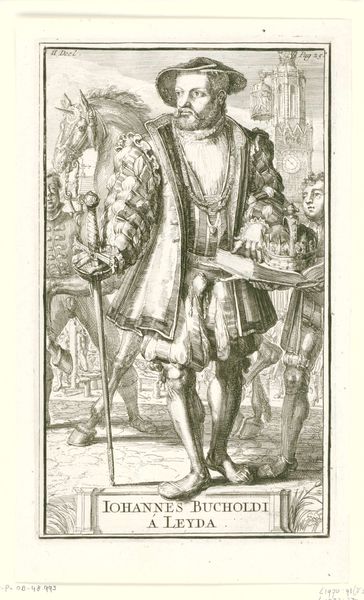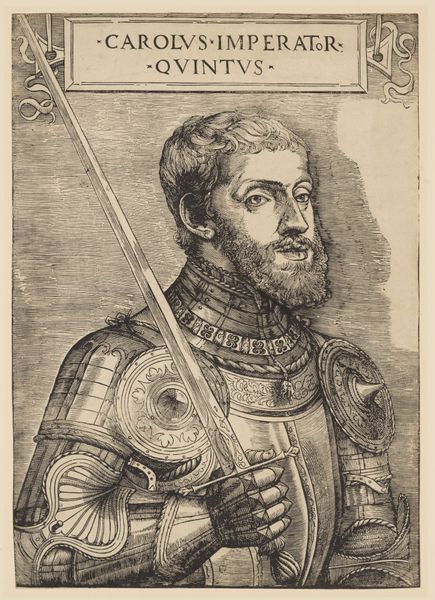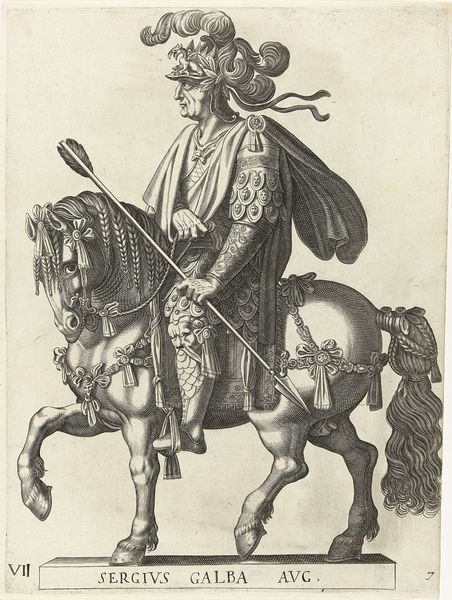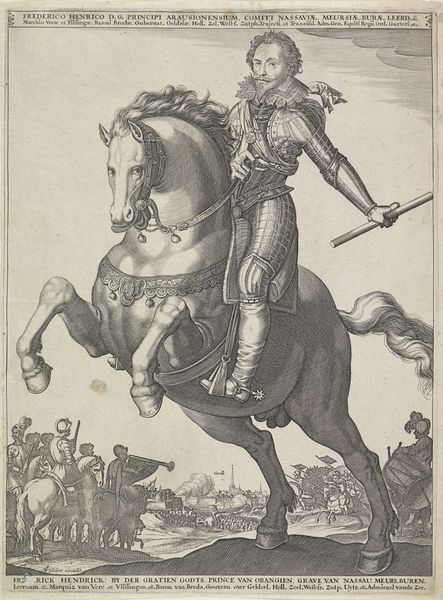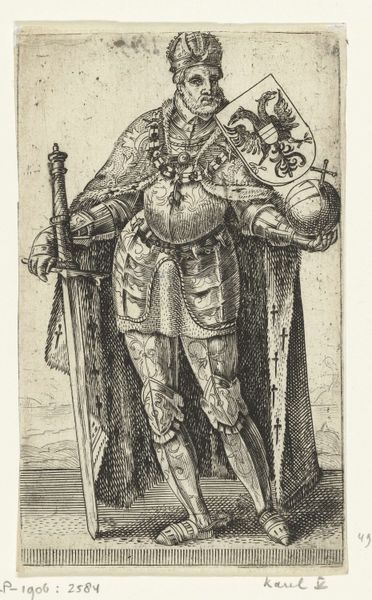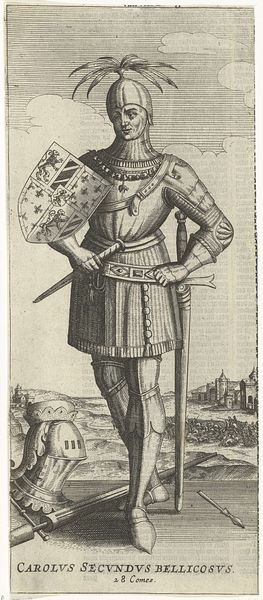
oil-paint
#
portrait
#
baroque
#
oil-paint
#
figuration
#
oil painting
#
history-painting
#
realism
Copyright: Public domain
Curator: Welcome. Here, we have a striking portrait attributed to Peter Paul Rubens, entitled “Emperor Maximilian I”. The piece is an oil painting on panel. Editor: What strikes me immediately is the overwhelming presence of meticulously rendered materials. The cold sheen of polished steel against the softness of that clouded sky… a stark dichotomy. Curator: Absolutely. The composition leverages precisely that tension, pitting textures against each other. Notice the strategic use of gold leaf on the armor, accentuating status, as well as a more intrinsic symbolic weight to concepts of imperial power. Editor: The layered approach to depicting these garments also shows the labor that went into Maximilian’s outfits: the forging and chasing of the metal, the embroidery of the heraldic clothing underneath…each layer reflecting specific guildcrafts. Was all of this assembled in Rubens's own studio? Were multiple workshops responsible for its production? Curator: That interplay, whether realized within Rubens's workshop alone or facilitated externally through collaborative makerships is part of the mystique of Baroque-era workshops, for sure. Look how he organizes areas on the canvas by a complex color system of reds, golds, blues, and blacks, bringing order. The red curtain backdrop serves not just as filler but enhances the other elements—an act of color-based framing. Editor: The man himself is almost lost amidst such opulent detail, as if he's secondary to the display of imperial trappings. It feels less about Maximilian as a person, more about a representation of the office. Do you think the materiality overpowers any sense of individual character? Curator: Perhaps intentionally so. We view him, presented in this image, in accordance with dynastic projection, that ideal self which would then bolster notions of heritage and legacy. Yet even within that, observe the precision in light and shadow, Rubens invites us, ultimately, into the portrait. Editor: It brings to mind how visual art like painting functioned differently then than today—integral to political messaging, statecraft, even, beyond simply decoration or artistry. This artwork gives us so much to ponder. Curator: Indeed, there is so much that goes into its meaning.
Comments
No comments
Be the first to comment and join the conversation on the ultimate creative platform.
